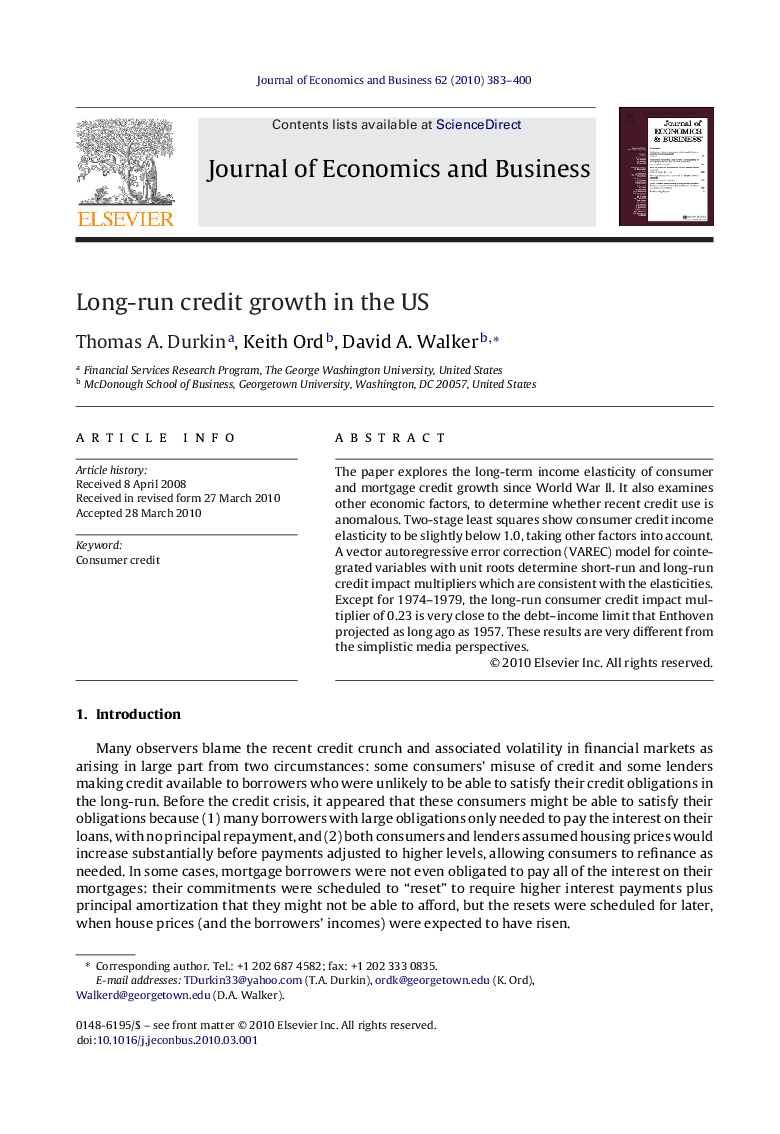| Article ID | Journal | Published Year | Pages | File Type |
|---|---|---|---|---|
| 957937 | Journal of Economics and Business | 2010 | 18 Pages |
The paper explores the long-term income elasticity of consumer and mortgage credit growth since World War II. It also examines other economic factors, to determine whether recent credit use is anomalous. Two-stage least squares show consumer credit income elasticity to be slightly below 1.0, taking other factors into account. A vector autoregressive error correction (VAREC) model for cointegrated variables with unit roots determine short-run and long-run credit impact multipliers which are consistent with the elasticities. Except for 1974–1979, the long-run consumer credit impact multiplier of 0.23 is very close to the debt–income limit that Enthoven projected as long ago as 1957. These results are very different from the simplistic media perspectives.
